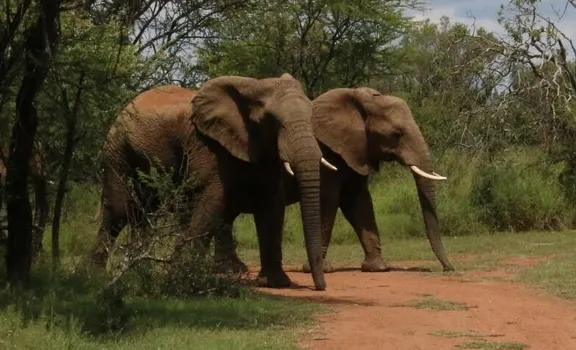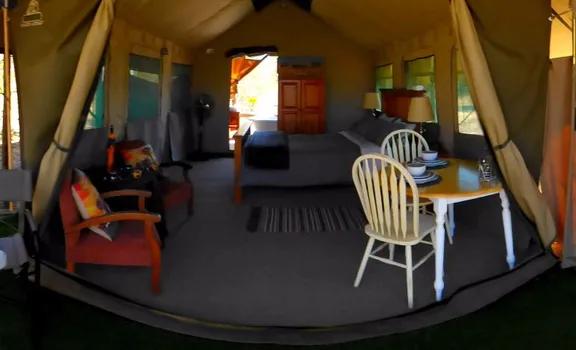Rolling Riches: How Dung Beetles Turn Elephant Gold into Bushveld Treasure
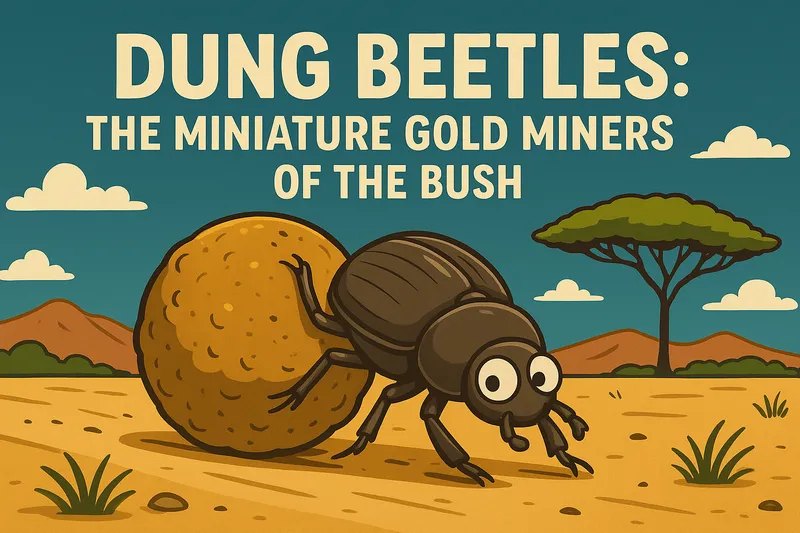
Spoiler Alert: The Real Bushveld Stars Are Smaller Than You Think!
The heroes of this story aren’t lions or elephants… they’re the tiny gym champions of Thorn Tree!
Don’t miss the videos at the end — proof that no one rolls with more purpose (or style) than a dung beetle.
Meet the tiny bulldozers of Thorn Tree — the beetles who roll, dig, and shine under the Milky Way to keep the bush alive and clean.
If you think lions rule the savannah, elephants own the land, and hyenas handle the night shift — think again. The real unsung heroes of the bush veld are much smaller, shinier, and infinitely more determined. Meet the dung beetles of Thorn Tree Bush Camp: nature’s miners, gym champions, and sanitation engineers — all rolled into one. They may be tiny, but these beetles keep the bush running smoother than a new Land Cruiser gearbox. Without them, life in Dinokeng would grind to a halt under a mountain of… well, let’s call it Elephant Gold.
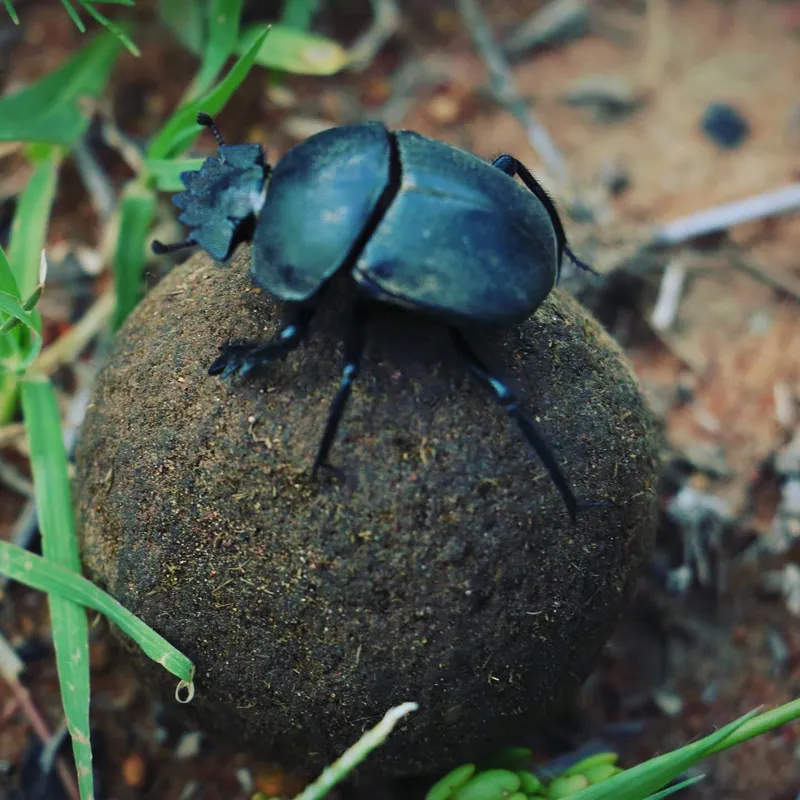
Where the Treasure Comes From
Enter the elephants — the generous benefactors of the dung beetle economy.
Each day they deposit a steaming pile of opportunity. To us humans it’s a smelly inconvenience; to a beetle, it’s Black Friday at the bush supermarket.
Within minutes, wings hum like miniature helicopters. Beetles dive in head-first, carving, shaping, and rolling their prize balls of dung with all the enthusiasm of shoppers fighting over a sale item.
To the casual observer it looks chaotic — dozens of beetles rolling in different directions — but every one of them knows exactly where they’re going. Find it, shape it, roll it, bury it. All before some sneaky neighbour steals it.
In the bush, there’s no fence around your fortune, so reflexes matter. The early beetle gets the… dung.

Rolling Riches
Guests often stop mid-safari, puzzled, watching a tiny beetle pushing what looks like a giant chocolate truffle across the track.
“Shame,” a guest once whispered, “he must be late for the office.”
Our guide laughed. “That’s not a Monday commute — that’s a lifetime investment he’s pushing!”
That ball is everything: food store, love token, and future nursery rolled into one.
The male sculpts the perfect sphere, smooth and sturdy, then parades it proudly hoping to impress a lady beetle. If she approves, she hops aboard like a queen on a royal chariot, and together they roll off to a quiet patch of sand. There they dig a little chamber, bury the ball, and she lays her eggs inside.
When the larvae hatch, they find themselves born inside a ready-made home stocked with food. Talk about a golden start in life — literally.
Beetle Gymnastics
Picture this: a beetle half the size of your thumb rolling a ball fifty times heavier than itself — backwards, using only its hind legs.
That’s like you pushing a double-cab bakkie up a hill with your heels.
One species, Onthophagus taurus, can move 1 141 times its own body weight — pound-for-pound one of the strongest creatures on Earth.
You’ll see them clambering over stones, twigs, or even an elephant footprint without letting go of their treasure. Drop the ball, and another beetle will snatch it before you can blink.
A guest once watched two beetles locked in a tug-of-war — one pulling north, the other south — until both tumbled into a heap. The guide grinned: “That’s bushveld marriage for you — teamwork with healthy competition.”
Nature’s First GPS
When darkness falls and the Milky Way stretches across the African sky, the beetles perform what scientists call a “celestial orientation dance.”
They climb atop their dung ball, spin in a slow circle, and lock onto the glow of the galaxy. Research shows that species like Scarabaeus zambesianus navigate using the Milky Way — the first known animals to do so.
Once aligned, they roll in a perfectly straight line, undeterred by rocks, roots, or your campsite chair. No Google Maps. No Wi-Fi. Just starlight and instinct.
Imagine a beetle voice giving directions:
“In 50 metres, avoid anthill. Continue straight toward acacia. Destination – eternity.”
If only our GPS units were that reliable in the bush!

The Cleaning Crew of the Wild
Beyond the comedy and gymnastics, dung beetles are nature’s 24-hour cleaning service.
Every mound of dung they bury recycles nutrients into the soil, improving plant growth and grazing quality. They aerate the earth, boost moisture retention, and dramatically reduce fly and parasite numbers.
Without them, the bush would soon be knee-deep in leftovers from elephants, rhinos, buffalo and friends.
Studies show dung beetles can bury up to 80 % of animal waste in a grazing area — a free ecological service worth millions if we tried to replace it.
So when the air smells sweet after the rains, give credit where it’s due. Somewhere underfoot, a beetle just clocked another shift.
Right of Way Rules
Here’s a rule every visitor to Dinokeng should know: dung beetles have official right-of-way on reserve roads.
If you see one pushing his ball across the track, stop. Don’t honk, don’t swerve — just wait and enjoy the show. Inside that ball might be a whole future generation of beetles.
We’ve had guests cheering from the vehicle like it’s the Rugby World Cup:
“Go little guy! Over the stick! Nearly there!”
Few sights are funnier — or more heart-warming — than a determined beetle finally conquering a bump and disappearing triumphantly into the grass.
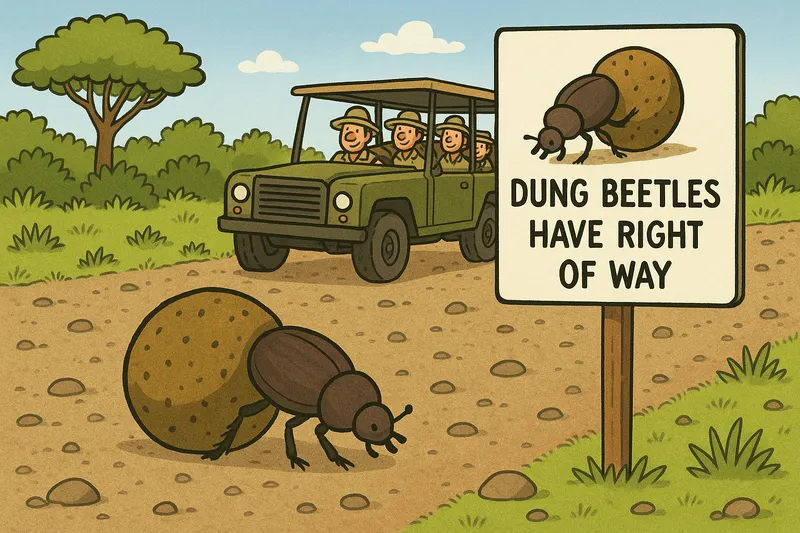
The Dung Department: Rollers, Tunnelers & Dwellers
Not all dung beetles have the same job description. Scientists group them into three main guilds:
1. Rollers – Adventurous entrepreneurs who roll dung balls away from the pile and bury them elsewhere. The bush’s nomads, forever on the move.
2. Tunnelers – The underground workforce. They dig tunnels directly beneath the dung and store their treasure below the surface.
3. Dwellers – The homebodies who simply live inside the pile and feast where they are. Why move when the buffet comes to you?
Together they form the bushveld’s most efficient waste-management team. Even our camp staff, rocket-boiler champions though they are, salute that work ethic.
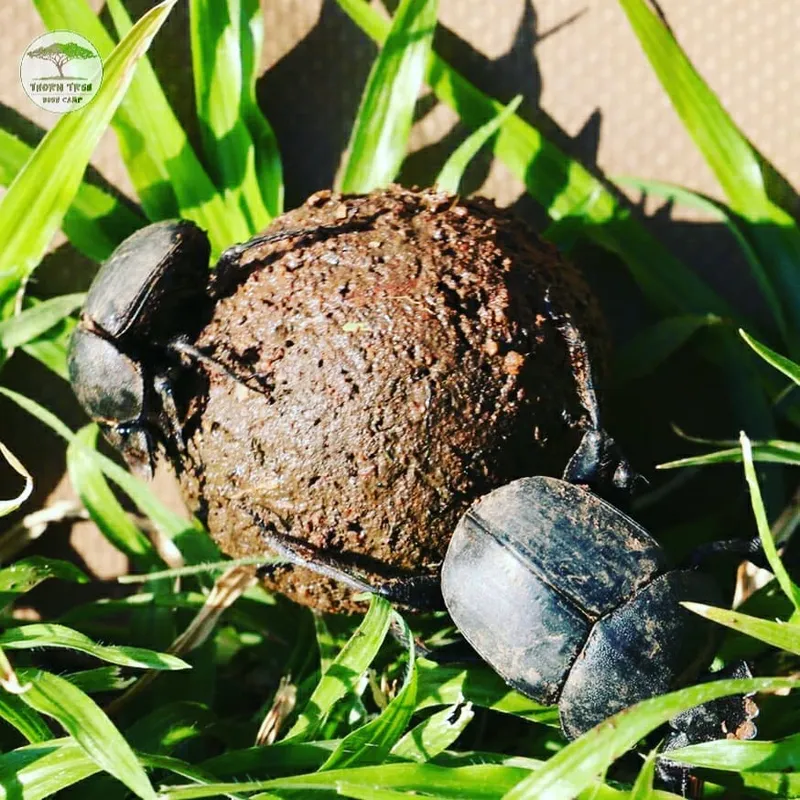
A Thorn Tree Twist
Every guide at Thorn Tree has a favourite beetle story.
One evening, a guest saw a beetle rolling uphill and sighed, “Poor chap, must be late for work.”
The guide grinned. “Work? That’s a long-term investment — house, pantry, and pension fund all in one.”
On another drive, while guests fought with their phones for signal, a beetle cruised past in a perfect straight line.
“See?” said the guide. “He’s locked onto the Milky Way. We’re lost; he’s not.”
And once, a cheeky thief rolled off with another’s dung ball. Instead of surrendering, the victim climbed aboard for a free ride — proof that even in the beetle world there’s always a Plan B.
The Greater Good
South Africa hosts over 780 species of dung beetles — from the flightless Circellium bacchus of Addo to the giant Pachylomera femoralis that can roll elephant dung the size of a grapefruit. Collectively, they’re true ecosystem engineers. Their work enriches soil, reduces parasites, supports grazing animals, and even benefits farmers.
Sadly, some species are declining due to habitat loss and veterinary chemicals in livestock dung. Protecting them isn’t just good manners — it’s good conservation.
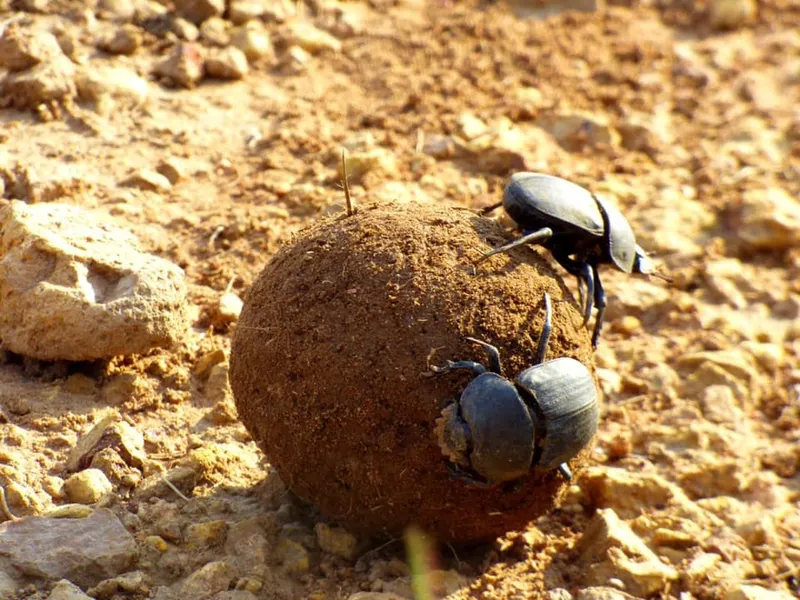
A Lesson in the Dust
At Thorn Tree, we often talk about the “circle of life.” Lions roar, elephants trumpet, and owls call through the night. But the dung beetle quietly completes that circle — turning waste into renewal.
Greatness in the bush isn’t about size; it’s about purpose. The beetle reminds us that determination, direction, and a good sense of humour can roll you far in life.
So next time you’re sipping coffee at sunrise or soaking in your Tickel Tub under the Milky Way, spare a thought for the tiny beetle pushing his treasure through the dust. He might not make the headlines, but without him the bush would be a very different place.
He’s the quiet cleaner, the soil restorer, the humble recycler —the true custodian of Elephant Gold.
Thorn Tree Takeaway
At Thorn Tree Bush Camp, we salute the dung beetle: tiny, tireless, and totally underrated. Proof that in the wild — as in life — the greatest legends often come in the smallest packages.
And if you spot one rolling his treasure across your path, remember: he’s not just moving dung…he’s moving the bush itself, one golden ball at a time.
The Little Power lifter: Dung Beetle Rolling His Ball of Gold
Description: Watch one of Thorn Tree’s strongest residents in action — a determined dung beetle rolling his golden treasure across the dusty Dinokeng track, one heroic push at a time.
Buried Treasure: The Dung Beetle’s Gold Goes Underground
Description: Follow the bushveld’s tiniest miner as he digs, buries, and hides his prized ball of Elephant Gold — proving that not all treasure shines, but it sure keeps the wild turning.
